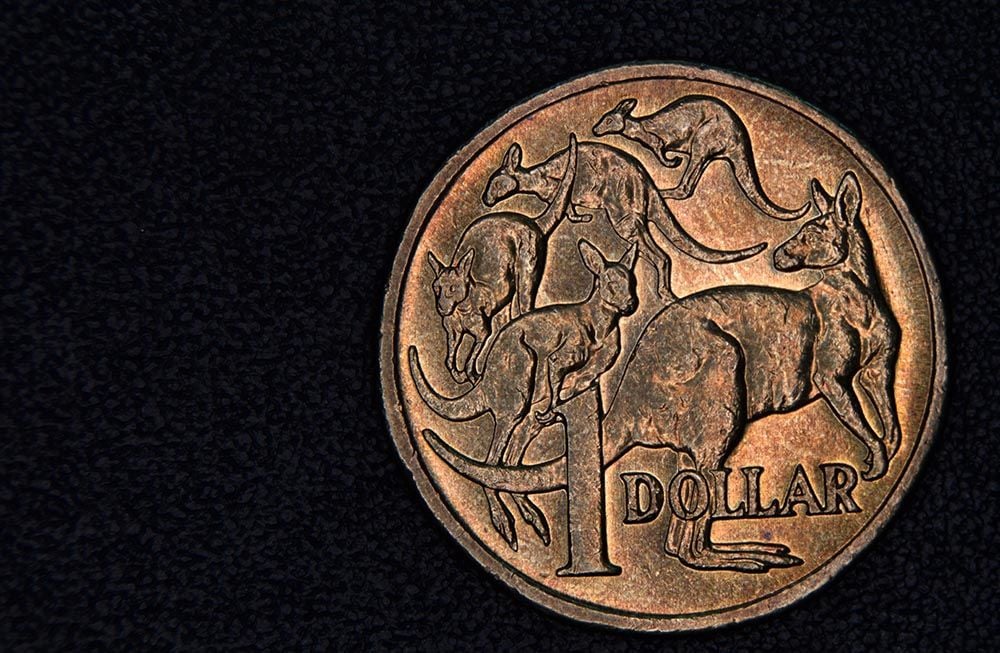Pound-Australian Dollar Retreats from 1.85 Highs, but Aussie Headwinds to keep Downside Limited
- AUD strength to remain limited due to RBA
- China tensions to weigh on AUD says Credit Agricole
- 'blue wave' in U.S. elections could however be supportive

Image © Adobe Images
- GBP/AUD spot rate at time of publication: 1.8266
- Bank transfer rates (indicative guide): 1.7627-1.7755
- Transfer specialist rates (indicative guide): 1.7840-1.8100
- More information on specialist rates, here
- Book your ideal exchange rate automatically, here
Having breached the 1.85 level last week, the Pound-to-Australian Dollar exchange rate finds itself pulling back and retracing gains amidst building anticipation as the Brexit saga nears it climactic finish.
Sterling exchange rates traded softer at the start of a new week in which EU and UK negotiators are expected to continue working towards a deal, with reports out over the weekend suggesting that next Saturday is being eyed by both sides as a realistic deadline for negotiations.
GBP/AUD has rallied for two weeks in succession now amidst building optimism that a deal can be struck, however analysts are warning that gains are likely to remain limited until a clear outcome to negotiations is achieved. At the same time, any weakness is likely to be shallow which suggest the GBP/AUD exchange rate could be stuck in the 1.81-1.85 vicinity over coming days.
Above: GBP/AUD daily chart. If you would like to set an order for your ideal rate to be automatically fulfilled once reached, find out more here.
"A deal, which remains our base case, will likely result in a fresh leg higher for the pound and a re-pricing lower in implied vols, which have remained rather elevated, in our view," says Nikolaos Sgouropoulos, analyst at Barclays.
Expect any upside potential in GBP/AUD to be accentuated by a phase of notable Australian Dollar weakness, driven in principle by rising expectations for the Reserve Bank of Australia (RBA) to ease its policy settings at its November meeting.
Markets are tipping the RBA to ease policy settings by cutting its cash rate from 0.25% to 0.10% while it is expected to lower the target yield on three-year Australian government bonds to 0.10% from 0.25%.
The RBA is also expected to boost its quantitative easing programme by adopting a more traditional approach that will see it target other government bonds apart from the three-year.
The rule of thumb in foreign exchange is that when a central bank moves to ease policy the currency it issues declines in value. This is particularly true of central banks that enter a phase of easing with high interest rates and bond yields relative to its peers, as is the case for the RBA and Reserve Bank of New Zealand.
The AUD and NZD have therefore been particularly sensitive to attempts to lower policy rates in 2020.
Another potential headwinds to the Aussie Dollar over coming days and weeks could be developments concerning China, which has over recent months moved to place restrictions on Australian exports.
October has seen reports emerge that authorities have instructed Chinese importers to cease the purchase of Australian coal, with political commentators saying the move is a result of heightened political tensions between the two countries over the origin of covid-19.
"Australia’s current account surplus is dependent on its trade with China, however, and next week’s China Plenum presents some downside risks. China could use the Plenum to ramp up its economic pressure on Australia with plans to diversify away from Australian supplies of ‘strategic’ commodities. While Australia’s coal exports to China are at risk, its iron ore and LNG exports are likely safe for now," says David Forrester, FX Strategist at Credit Agricole in London.
Coal is Australia's second largest export and foreign exchange earner after iron ore, accounting for 14% of the country's export basket. A cut in exports to China will likely impact the country's foreign earnings potential, which will in turn have consequences for the Aussie Dollar.
"Improving global demand and further supply cuts suggest we have seen the low in met coal prices but an enforced Chinese ban on Australian coal imports would be a blow," says Justin Smirk, Senior Economist at Westpac.
Credit Agricola analysis meanwhile reveals that historically AUD/USD declines following US elections and "the potential for a disputed US presidential election raises the risk of a near-term dip in AUD/USD akin to what it experienced in 2000," says Forrester.
However, the analyst notes a ‘blue wave’ victory by the Democrats - whereby they take the Senate as well as the White House - would be positive for the Aussie in the medium term given its downward pressure on the USD and a likely less confrontational approach to US trade with China.
"Another Donald Trump presidency would be negative for the AUD given the greater risk of an escalation in US-China trade tensions," says Forester.
Credit Agricole say that while there should be some near-term pain for AUD given RBA policy, Chinese import skirmishes and the U.S. election, the medium-term, multi-month picture should see damage being relatively limited.
"We think that the downside in the currency is limited from here so we retain our forecasts for AUD/USD for end-2020 and end-2021 at 0.72 and 0.76," says Forrester.






